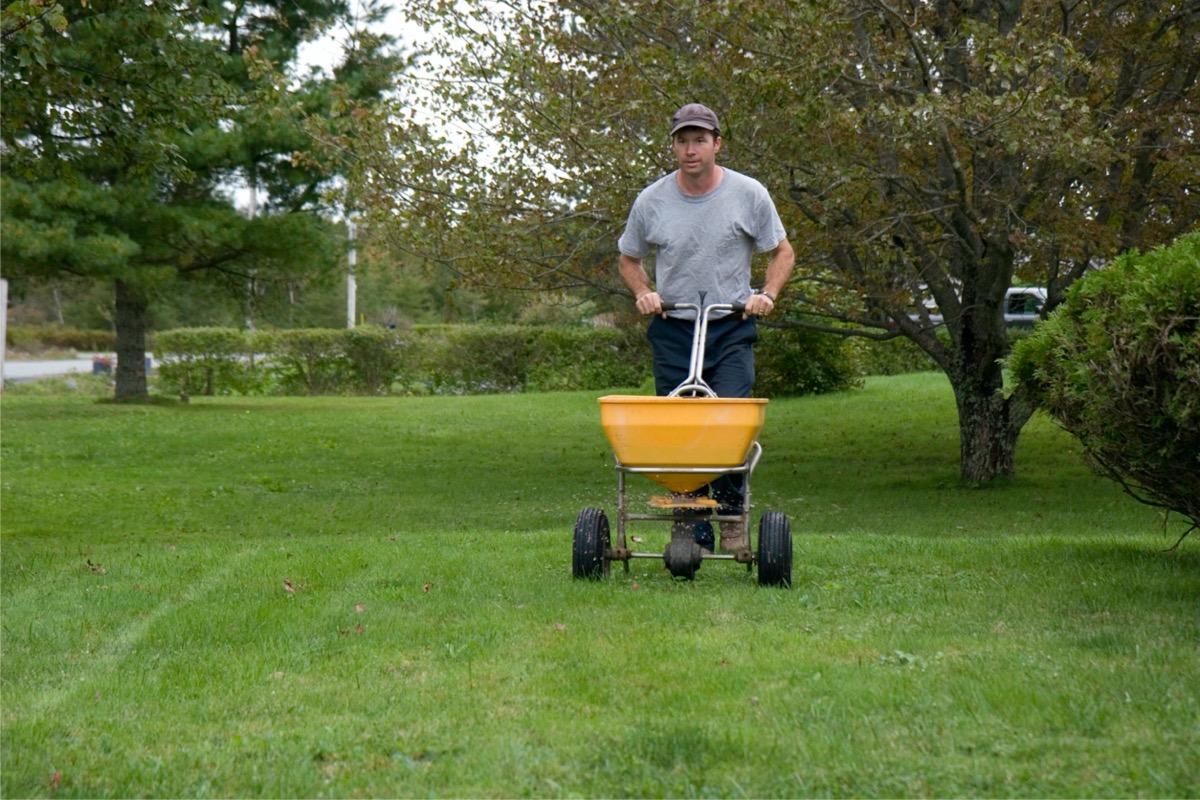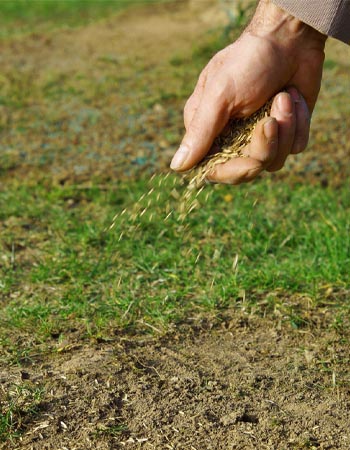

We may earn revenue from the products available on this page and participate in affiliate programs. Learn More ›
Welcome to Ask a Pro! Every month, we’ll take your questions about home improvement, DIY, lawn and garden, and homeownership and answer them with the help of professionals. Our experts are vetted and verified—and they’re eager to share their knowledge.
Last month, BobVila.com readers submitted lawn and garden questions on Facebook and Instagram, and via our newsletter. We hand-picked our favorites, and tapped the Pest and Lawn Ginja to answer some of them. In this Ask a Pro column, the Pest and Lawn Ginja helps our readers get greener grass, bring road salt-damaged grass back to life, get rid of creeping bellflower, and more.
Meet the Expert: The Pest and Lawn Ginja
The Pest and Lawn Ginja, is known for solving lawn and pest problems, big or small. He has been a licensed technician since 2004 and owned a pest control and lawn care company for over 15 years. He has also developed his own five-step approach for solving any lawn problem.
Check out the Pest and Lawn Ginja’s YouTube page and website.
- Want more lawn and garden advice? Sign up for our newsletters!
We had trees and stumps removed. What do I do to get grass? Seed, dirt, rake—I don’t know where I should start. — Hope M. on Facebook

Ginja’s Advice: This is a great question. Ideally, the first thing we want to try our best to do is to remove as much of the chips as possible, or at least down 8 to 10 inches and replace it with top soil.
Second, we need to compact the area. We can do this by simply stepping on top of the dirt until it reaches optimal compaction. Or you can use a hand tamper to compact the dirt.
The next step would be to level the area out with a garden rake to match the height of the grass beside it.
Then, lay down some grass seed. Be sure to get a seed variety that closely matches what you have. If you are unsure, take a small sample into a nursery and ask if they are able to help identify the species you have. The most important part is to put the seed down in a way that there are small 1- to 2-millimeter spaces between each seed so as to not overcrowd. Afterward, you can step on the seed to help push it into place.
The last step is to lay a small layer of topsoil on top of the seed, meaning a quarter inch or less. This helps cover the seed and helps prevent washout.
As far as watering goes, we need to keep the seed moist at all times for about 3 to 6 weeks as the seed is germinating. Ideally, we want to set up a sprinkler or hose that has an oscillating sprinkler attachment on it and run it at small increments to keep the top layer of the soil damp and not wash the seed out.
The other option is to cut out the dead area, level it as described above, and replace it with sod. The sod will need to stay damp for upwards of 4 weeks during its rooting period. Hope that helps!
- See the best oscillating sprinklers.
How do you stop the neighbor’s sticker patch from invading your St. Augustine lawn? Postman cuts through it, carrying the seeds across my lawn and everyone’s past me. — CtyChck Tex on Facebook
Ginja’s Advice: That sounds very frustrating. When it comes to stickers and burs, the only option is to get your property and your neighboring properties’ weed situation under control. In my experience, it takes about a year and a half of diligent weed control to get the situation contained.
Here’s how I approach it. Number one: mechanical control. I purchase foam rollers from the local dollar store and roll the area as many times over [as necessary] to catch as many sticker weed seeds on the rollers as possible. Unfortunately, these types of seeds can remain in the soil in a dormant state for 2 to 3 years before germinating. So the more the more you remove, the faster you speed up this process. The other option is to purchase a device like the sticker burr removal tool. These devices work well for removing similar weeds.
The next step is to spray the weeds. I do not recommend spraying properties other than your own when it comes to applying weed control solutions. I found the best combination for sticker, burr, goat head, and others is a product called SpeedZone mixed at the label rates and with a surfactant. Applications should be done every 2 to 4 weeks during the sticker growth stages, or you can apply the solution as a spot treatment as you see the weeds coming up. I also apply a liquid pre-emergent like dithiopyr or liquid quinclorac every 3 months. All three [SpeedZone, the surfactant, and the liquid pre-emergent] can be mixed in the same bottle. Keep in mind that the information on the label is law, and be sure to only apply as directed by the label.
Why is my grass yellow but all my neighbors have green grass? — @kymm.d on Instagram
Ginja’s Advice: This is one of my favorite questions. General yellowing is commonly caused by watering too much or too little. Most of your success with your lawn will come down to proper watering. As a general rule of thumb, we want to see 6 to 8 inches of water saturation in the soil at all times. For most zones, we want to water three to five times per week. Other contributing factors are excess debris that has accumulated in the lawn, which would need to be removed by a lawn dethatcher device. Bug infestations are also a possibility.
I’m from Minnesota… and in winter they use road salt here. The first 5 to 8 inches of my property gets wiped out from the salt, and only weeds seem to grow there anymore. Is there anything I can do to make grass grow again, or do I just live with the eyesore? — Mike R. on Facebook
Ginja’s Advice: Salt damage is common. The professionals typically use a product to help flush the salt through the soil. There are two products I’ve used, one called Sodium Knockout 5.0.0 and the other called NA-X 5-0-0 Salt Damage Recovery.
Keep in mind there isn’t a guarantee that the grass will come back, but these products tend to work well. It’s best to apply them as the grass is coming out of winter dormancy in the spring.
Creeping bellflower is invading my yard. I physically cannot dig them out. What is my next best approach? I’m in Minnesota. —Tracey M. on Facebook
Ginja’s Advice: Hello Tracey—Creeping bellflower is a pain. Unfortunately, it is classified as a perennial plant and there are no known solutions on the market that will kill the creeping bellflower and leave your grass and/or other plants alive. My suggestion is to check out the Fiskars weed puller. It’s a handheld device that is almost 3 feet long that limits one from having to constantly bend over. Keep in mind that creeping bellflower has a rooting system that grows off a rhizome, and that’s why it spreads so fast. In other words, pulling by the root is the only way to get ahead of it. The only other options are to use a nonselective herbicide and kill out the entire area. Even with this option, it will take multiple sprays to get control of the situation.
- Want to know more about how to get rid of invasive plant species? Check out our first installment of Ask a Pro.
For a backyard prone to heavy wet areas, can you just lay down topsoil, level it out, and then top with sod? — Maddy via the newsletter
Ginja’s Advice: Fantastic question. Leveling areas is a fantastic way to control areas that are consistently pooling water. If you are going to push the level up more than 3 inches, placing the dirt on top of existing grass, then putting sod over the top, is most likely going to work out just fine. In an ideal situation we would want to cut the grass out with a sod cutter or shovel, then apply the dirt to the desired height followed by the reinstallation of the grass. I find the best leveling soil is a 50/50 blend of topsoil and sand.

Want more advice?
We’re tackling pest and wildlife control problems in June. Have a question? Let us know by filling out this form!
Some queries have been edited for clarity.
